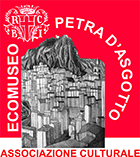
Monday - Feast of St. Michael the Archangel
Easter Monday is celebrated in Nicosia, in the district, St. Michael the Archangel, while the "Easter" is made on the following day (the so-called Martedì dell`Itria).
During the procession, under the feet of the statue of San Michele (the work of the seventeenth century from Nicosia Volsi Stephen Li), which is carried in procession through the streets of the neighborhood, frightened by the figure of the saint, escape "the devils dell`inferno", peasants Nicosiani disguised with black goat skins and face hidden by masks shades of carbon black, compelled dall`Arcangelo wielding a long sword; these devils entertain and, sometimes, terrorizing children and women barefoot and screaming.



